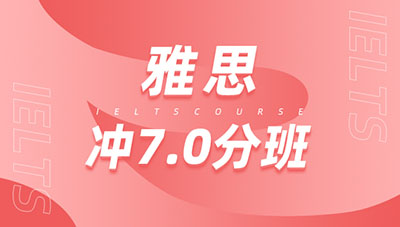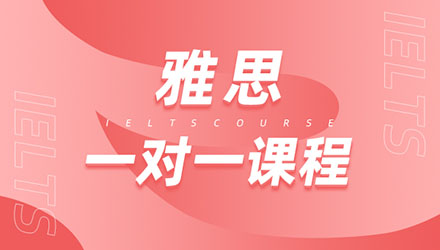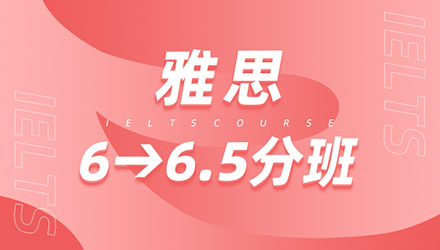西安雅思学校的排名如下:
西安新东方雅思:作为国内教育品牌,西安新东方雅思培训学校备受推崇,课程丰富多样,提供大量教学资源和应试技巧,拥有经验丰富的教师团队
西安思润雅思:环境优雅,提供基础班和强化班选择,还有课前0元试听服务
西安新航道雅思:在全国范围内拥有众多校区,提供1v1课程和大班小班选择,教师经验丰富,课后答疑服务出色
西安环球雅思:在雅思培训领域度高,教学环境优美,师资力量雄厚,课程体系完善,涵盖不同阶段的课程
西安启德教育:提供全面的留学服务和考试培训,拥有丰富的教学资源和专业的顾问团队,能够为学员提供留学规划和选校建议
西安学为贵教育:作为雅思考试白金级合作伙伴,教学方法独特,注重技巧与能力的双重提升
西安新通教育:提供多样化的雅思培训课程,注重学员的个性化需求和实战演练
西安朗阁雅思:成立于1999年,提供小班授课和中外老师联合教学,注重学员与老师的面对面交流
西安威学一百教育:以专业的教学团队和独特的教学方法著称,注重学员的个性化需求和精细化教学
西安英孚教育:注重英语综合能力的提升,采用全英文教学环境,配备专业外教和中教团队

在雅思阅读中,同义词替换是考察考生对文章理解能力的重要方式之一。掌握常见的同义词替换不仅能帮助你更快地定位信息,还能提高答题的准确率。以下是一些雅思阅读中常见的同义词替换,按类别进行分类,帮助你更好地准备考试。
一、常见同义词替换
1. 表示“增加”
increase → rise, grow, expand, soar, surge, climb
示例:
The number of students increased significantly.
The number of students rose significantly.
The number of students grew significantly.
2. 表示“减少”
decrease → fall, drop, decline, shrink, plummet
示例:
The sales figures decreased last year.
The sales figures fell last year.
The sales figures dropped last year.
3. 表示“变化”
change → vary, fluctuate, shift, alter, transform
示例:
The temperature changed throughout the day.
The temperature varied throughout the day.
The temperature fluctuated throughout the day.
4. 表示“重要”
important → significant, crucial, vital, essential, key
示例:
This study is important for future research.
This study is significant for future research.
This study is crucial for future research.
5. 表示“影响”
affect → impact, influence, have an effect on
示例:
The new policy affects many people.
The new policy impacts many people.
The new policy influences many people.
6. 表示“原因”
because → due to, as a result of, owing to, since
示例:
He failed the exam because he didn't study.
He failed the exam due to lack of preparation.
He failed the exam as a result of not studying.
7. 表示“结果”
result → outcome, consequence, effect
示例:
The result of the experiment was surprising.
The outcome of the experiment was surprising.
The consequence of the experiment was surprising.
8. 表示“优势”
advantage → benefit, strength, plus, merit
示例:
One advantage of technology is convenience.
One benefit of technology is convenience.
One strength of technology is convenience.
9. 表示“劣势”
disadvantage → drawback, weakness, minus, flaw
示例:
One disadvantage of technology is the potential for distraction.
One drawback of technology is the potential for distraction.
One weakness of technology is the potential for distraction.
10. 表示“提供”
provide → supply, offer, furnish, give
示例:
The company provides excellent customer service.
The company supplies excellent customer service.
The company offers excellent customer service.
11. 表示“发展”
develop → grow, evolve, progress, advance
示例:
The technology has developed rapidly.
The technology has grown rapidly.
The technology has evolved rapidly.
12. 表示“使用”
use → utilize, employ, apply, operate
示例:
He uses the software every day.
He utilizes the software every day.
He employs the software every day.
二、短语和句子结构的同义替换
1. 表示“导致”
lead to → result in, cause, bring about, contribute to
示例:
The new policy leads to significant changes.
The new policy results in significant changes.
The new policy causes significant changes.
2. 表示“例如”
for example → for instance, such as, like
示例:
For example, the new policy has many benefits.
For instance, the new policy has many benefits.
Such as the new policy, many policies have benefits.
3. 表示“然而”
however → nevertheless, nonetheless, although, despite
示例:
The policy has many benefits. However, it also has some drawbacks.
The policy has many benefits. Nevertheless, it also has some drawbacks.
Despite its benefits, the policy also has some drawbacks.
4. 表示“因此”
therefore → thus, hence, consequently, as a result
示例:
The policy has many benefits. Therefore, it is widely supported.
The policy has many benefits. Thus, it is widely supported.
The policy has many benefits. Hence, it is widely supported.
5. 表示“总的来说”
in summary → in conclusion, overall, to sum up, in short
示例:
In summary, the policy has more benefits than drawbacks.
In conclusion, the policy has more benefits than drawbacks.
Overall, the policy has more benefits than drawbacks.
三、如何识别同义词
关键词定位:在阅读文章时,标记关键词和主题句。在答题时,根据题目中的关键词,在文章中找到相关信息。
注意上下文语境:理解单词或短语的具体含义,寻找上下文中的线索。
积累常见同义词:学习和记忆雅思阅读中常见的同义词,特别是学术类文章中的专业词汇。
识别词根和词缀:通过词根和词缀,扩展词汇量,帮助你理解和记忆更多单词。
练习真题:通过练习雅思阅读真题,熟悉同义词的使用方式和题型特点,分析错题,针对性改进。
四、示例
以下是一个雅思阅读题目的示例,帮助你更好地理解如何识别同义词:
示例文章(摘自雅思真题)
The Benefits of Technology in Education Technology has revolutionized the way we learn and teach. With the advent of the internet, students now have access to a vast array of resources, including online courses, educational videos, and interactive tools. These resources not only provide students with the opportunity to learn at their own pace but also enhance their engagement and motivation. Furthermore, technology has made it easier for teachers to track student progress and provide personalized feedback. However, some critics argue that technology can be a source of distraction and that it may lead to a lack of face-to-face interaction among students.
示例题目
填空题:Technology has made it easier for teachers to track student ________ and provide personalized feedback.
答案:progress
分析:题目中的“track student progress”与文章中的“track student progress”是同义词。
判断题:The passage states that technology can be a source of distraction.
答案:True
分析:题目中的“source of distraction”与文章中的“source of distraction”是同义词。
选择题:What is the main benefit of technology in education according to the passage?
A. It provides access to a vast array of resources.
B. It enhances student engagement and motivation.
C. It makes it easier for teachers to track student progress.
D. It promotes face-to-face interaction among students.
答案:A
分析:题目中的“provides access to a vast array of resources”与文章中的“students now have access to a vast array of resources”是同义词。
通过以上方法和示例,你可以更地识别雅思阅读中的同义词,提高答题的准确率。祝你在雅思阅读考试中取得好成绩!

















